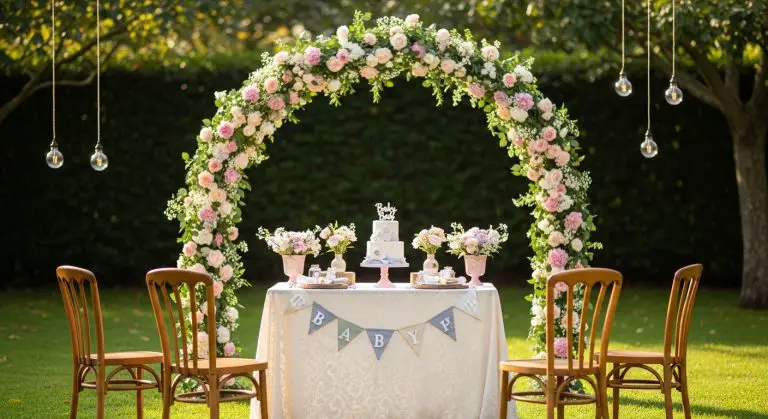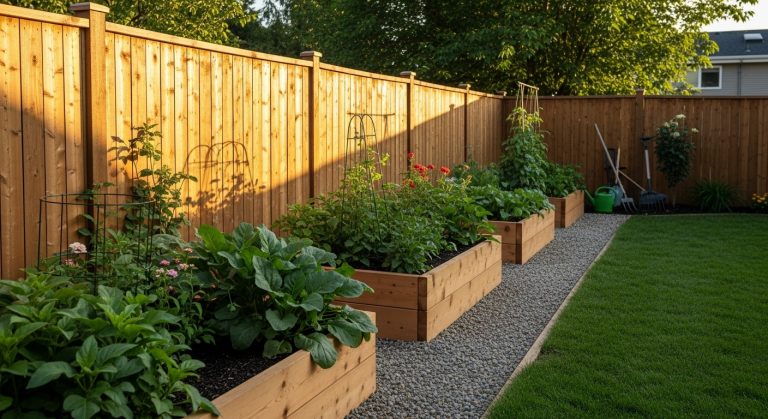Raised Garden Beds Watering System: 15 Clever Ways to Keep Your Plants Hydrated (Without Losing Your Mind)
You’ve spent all weekend building your gorgeous raised garden beds. They’re filled with rich soil, your seedlings are standing tall, and the sun is smiling down. But now comes the real question: how on earth do you keep them properly watered without turning into a full-time garden butler?
That’s where a raised garden beds watering system comes in. It’s like cruise control for your plants—consistent, efficient, and a total time-saver. Whether you’re a beginner gardener or a seasoned green thumb who’s tired of dragging hoses every morning, this guide will walk you through 15 smart (and surprisingly fun) watering system ideas that make plant care easy.
Ready? Let’s roll up our sleeves.
1. The Classic Drip Irrigation System
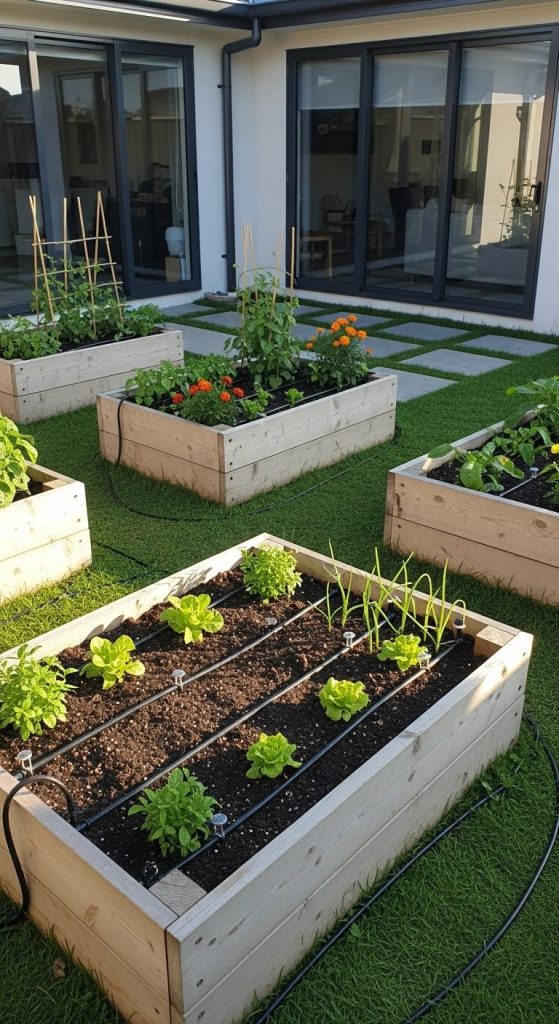
Let’s start with the MVP of garden hydration — drip irrigation. It’s a favorite for good reason: it’s efficient, low-maintenance, and your plants love it.
Pros
- Delivers water directly to the roots, minimizing waste.
- Saves time (you can literally set it and forget it).
- Perfect for raised beds, where soil dries out faster.
Cons
- Initial setup can be a bit finicky.
- If not maintained, emitters can clog.
Fun fact: According to a University of California study, drip systems can save up to 50% more water than overhead watering. That’s a big deal, especially in drought-prone regions.
2. The Soaker Hose Secret Weapon
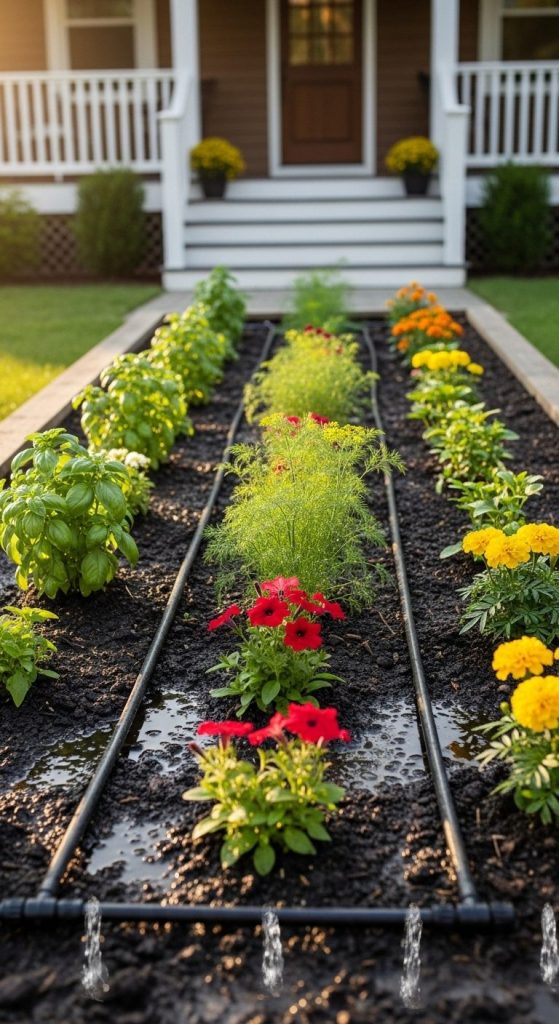
Imagine a garden hose that seeps water like a sponge—that’s your soaker hose. It’s laid across your bed and quietly hydrates the soil without splashing leaves or wasting water.
Pros
- Simple to install—no special tools.
- Provides even soil moisture.
- Great for long, rectangular beds.
Cons
- Can crack over time in strong sun.
IMO, soaker hoses are the introverts of irrigation—they don’t show off, but they get the job done beautifully.
3. The DIY PVC Pipe System
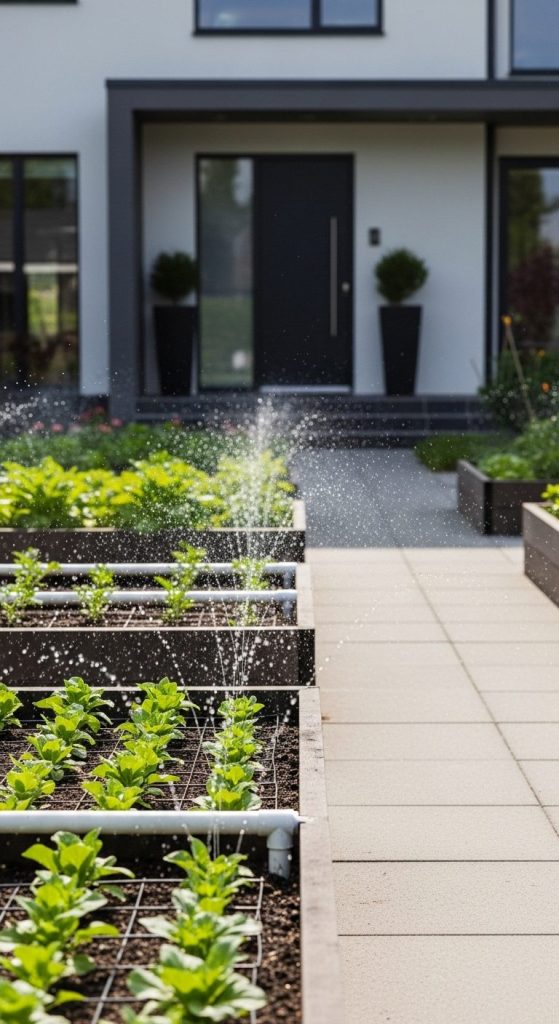
If you like building stuff, this one’s for you. A PVC watering grid placed across your raised beds ensures even coverage with custom-drilled holes.
Pros
- Customizable: design it to fit any bed size.
- Durable and inexpensive.
- Easy to connect to a timer or faucet.
Cons
- Not as flexible as hoses.
- Requires a bit of drilling work.
Pro tip: Use ½-inch PVC pipes and drill tiny 1/16-inch holes spaced every 6 inches. It’ll make your watering look professional and even.
4. Smart Water Timer + Drip Combo

Tired of guessing when to water? Pair your drip system with a smart water timer. You can literally schedule watering from your phone while sipping coffee.
Pros
- Hands-free automation.
- Adjusts easily for weather changes.
- Helps prevent overwatering.
Cons
- Batteries or Wi-Fi needed.
According to Statista, the smart home market for gardening devices is expected to hit $1.2 billion by 2026. Clearly, people love the idea of lazy efficiency.
5. The Gravity-Fed Barrel System

If you’re into sustainability, this one’s for you. Use a rain barrel positioned above your raised beds, attach tubing, and let gravity do the rest.
Pros
- Eco-friendly—uses rainwater.
- Saves money on your water bill.
- Works even during power outages.
Cons
- Needs elevation for good flow.
- Water pressure is weaker than tap systems.
Ever wondered why your grandma’s garden thrived without fancy gadgets? Rainwater. It’s slightly acidic and packed with nutrients plants adore.
6. The Self-Watering Wicking Bed
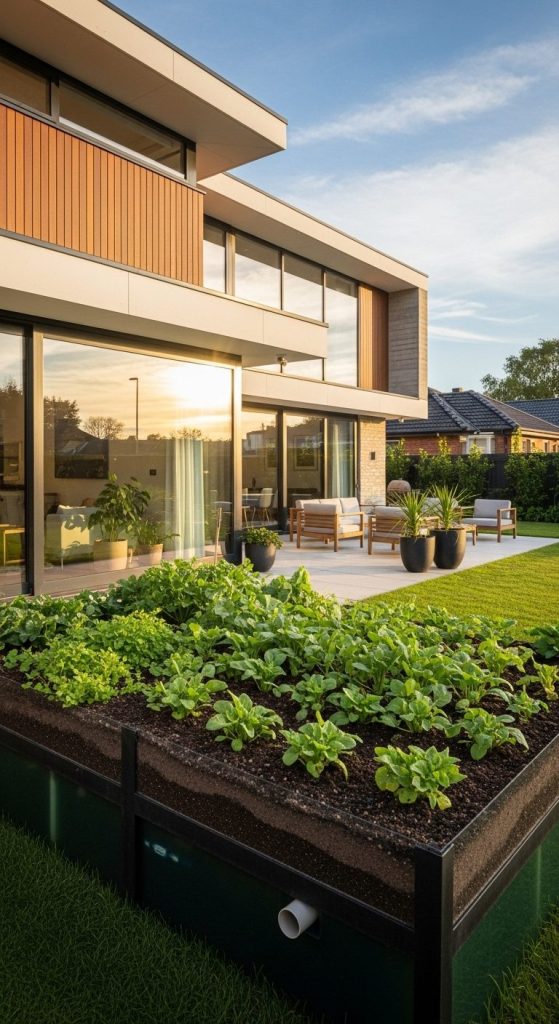
This method is a total game-changer. Wicking beds have a water reservoir underneath that feeds your plants from below. It’s like a self-refilling drink for your soil.
Pros
- Perfect for hot climates.
- Great for gardeners who forget to water.
- Encourages deep root growth.
Cons
- Takes more effort to build.
- Not ideal for root-sensitive plants.
FYI: A study from the University of Melbourne found wicking beds reduce water usage by up to 80% compared to surface watering. Impressive, right?
7. The Sprinkler-Style Pop-Up System
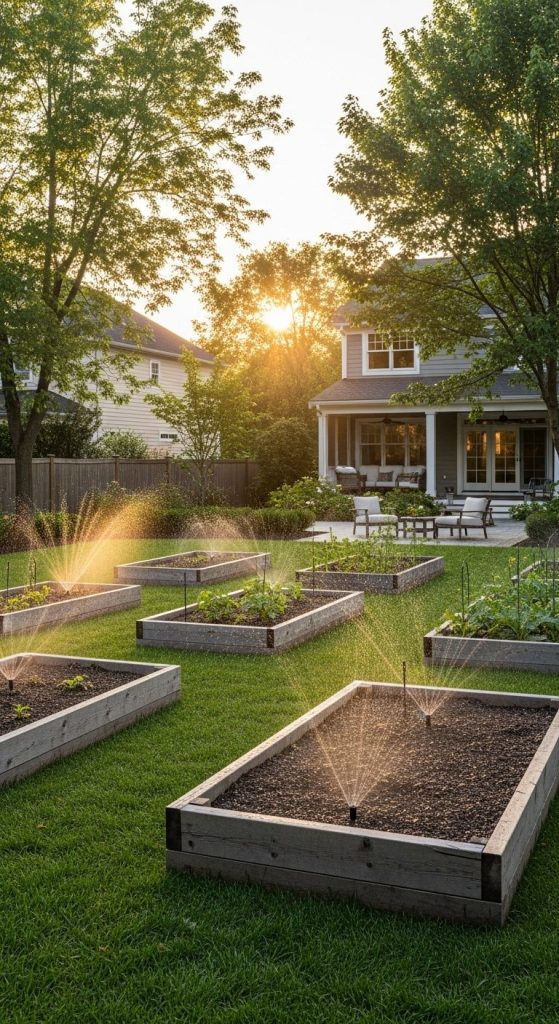
If you love the look of lush, even watering (and maybe a little garden drama), install a low-profile sprinkler system.
Pros
- Covers wide areas easily.
- Ideal for mixed crops.
- Fun to watch (come on, admit it).
Cons
- Not as efficient as drip systems.
- Can promote leaf diseases if overused.
Make sure your sprinkler emits a fine mist instead of big droplets—it prevents soil erosion and keeps everything gentle.
8. Micro Drip Emitters for Precision Watering
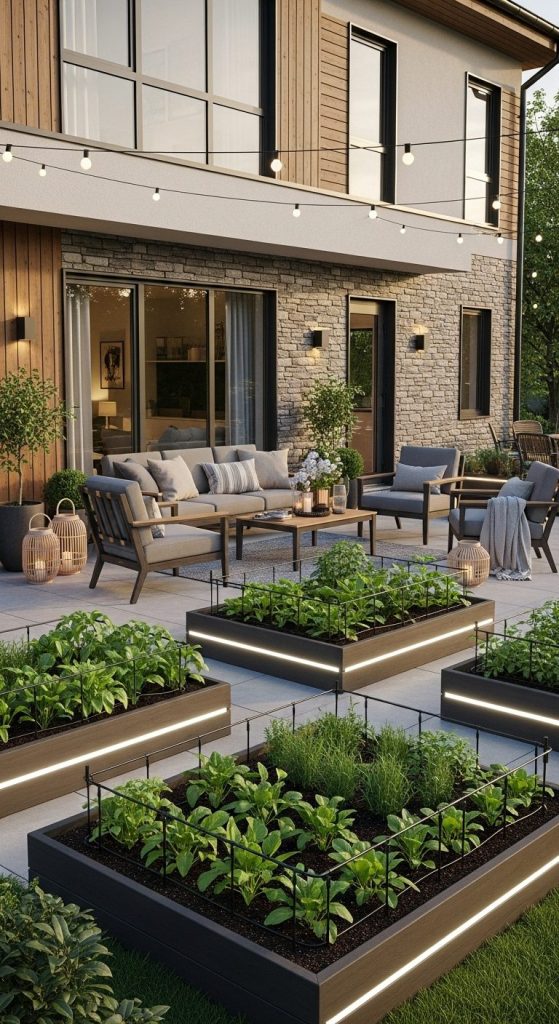
Sometimes, one size doesn’t fit all. Enter micro drip emitters, which let you tailor water output to individual plants.
Pros
- Perfect for mixed beds (flowers, herbs, veggies).
- Highly water-efficient.
- Easy to adjust or move.
Cons
- Slightly more expensive than basic drip lines.
I use these for my tomato beds—each plant gets just the right sip without drowning its neighbor. It’s oddly satisfying to fine-tune flow levels like a garden scientist.
9. The Underground Soak Tube

For a sleek, invisible option, bury perforated tubes under the soil surface. The system hydrates from below, keeping moisture consistent.
Pros
- Reduces evaporation.
- Keeps leaves dry and disease-free.
- Great for deep-rooted crops.
Cons
- Harder to check for clogs or leaks.
Think of it as the “Tesla” of irrigation—efficient, discreet, and super clean-looking.
10. The Solar-Powered Watering Kit

Love the idea of green energy? Solar-powered watering kits use sunlight to pump water automatically from your rain barrel or tank.
Pros
- Environmentally friendly.
- No wiring or electricity needed.
- Works best in sunny climates.
Cons
- Performance dips on cloudy days.
These are perfect for remote gardens or off-grid living. I tried one last summer—it felt like my garden was running on sunlight. Literally.
11. The Simple Handheld Wand (Yes, It Still Counts)

Let’s be honest—some of us like watering. It’s peaceful. Therapeutic. But using a watering wand with a shutoff valve gives better control and less waste.
Pros
- Lets you bond with your plants.
- Zero installation.
- Perfect for spot watering.
Cons
- Time-consuming for large gardens.
If you’re watering daily, get an ergonomic wand with multiple spray settings. Your back and your begonias will thank you.
12. Mulch + Drip Combo System
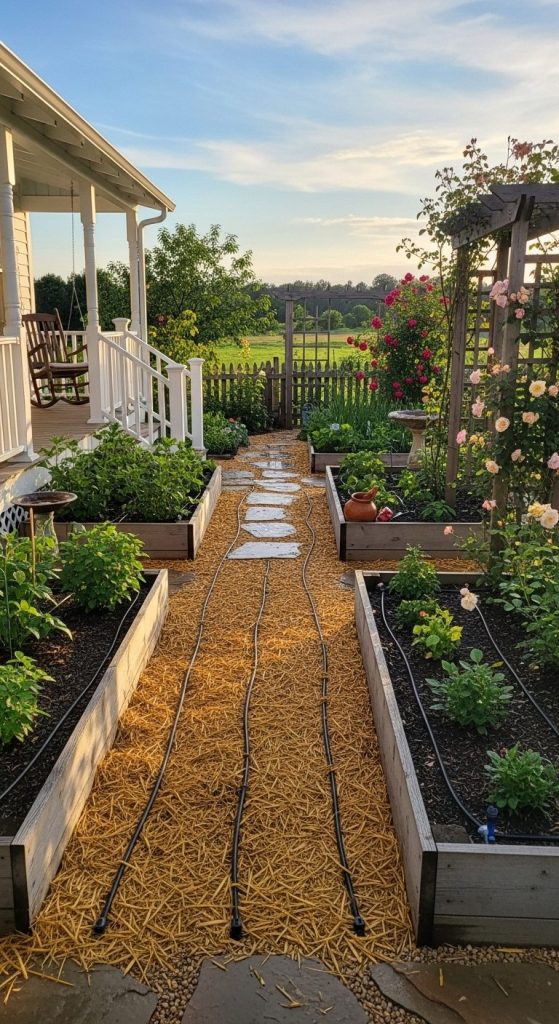
Want to supercharge your irrigation efficiency? Combine drip irrigation with organic mulch. The mulch keeps the soil cool and moist, while the drip line feeds roots consistently.
Pros
- Reduces evaporation drastically.
- Improves soil health.
- Looks tidy and natural.
Cons
- Mulch needs occasional refreshing.
Pro tip: use straw or wood chips as mulch. It helps trap moisture from your raised garden beds watering system and gives your garden that cozy, earthy aesthetic.
13. Moisture Sensor + Smart Valve

Feeling techy? Add moisture sensors that automatically trigger your watering system when the soil gets dry.
Pros
- Fully automated care.
- Saves tons of water.
- Great for travelers or forgetful gardeners.
Cons
- Higher upfront cost.
According to Houzz, 38% of homeowners who upgrade their gardens in 2024 added some form of automation. No wonder—it’s like giving your plants their own butler.
14. The Raised Bed Hose Grid

Sometimes simplicity wins. Arrange a flex hose grid across your raised bed, secured with stakes, and let it run gently across the surface.
Pros
- Inexpensive setup.
- Customizable for any bed layout.
- Easy to clean and replace.
Cons
- Can be less precise for small plants.
It’s a great “in-between” system—less complex than drip, but more consistent than hand watering. I use this setup for my herb beds—it’s low effort and looks clean.
15. Combination System (Because Why Choose Just One?)
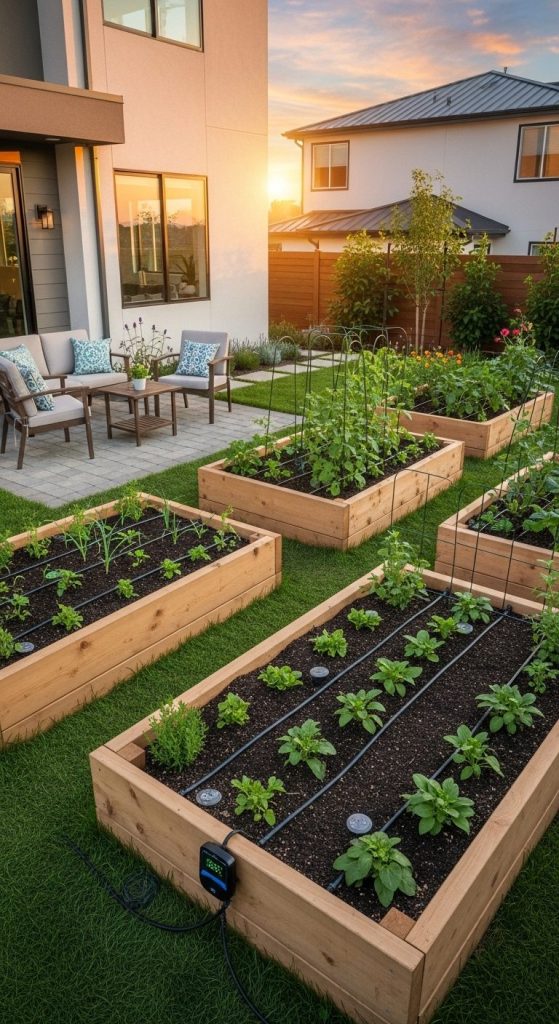
Finally, the power move: combine multiple irrigation methods. Maybe a drip line for the main bed, a soaker hose for edges, and a smart timer to control them all.
Pros
- Maximum flexibility.
- Works perfectly for mixed crops.
- You can adapt it over time.
Cons
- Slightly complex setup.
Once you’ve built your dream raised garden beds watering system, you’ll never go back. The plants stay happy, you save water, and your mornings are a lot less muddy.
Final Thoughts
So there you have it — 15 ideas to make your raised garden beds watering system smarter, simpler, and way more efficient. Whether you want to go full DIY or let smart tech take the reins, the secret is consistency.
Because here’s the truth: it’s not about watering more — it’s about watering better. Once you dial in the right system, you’ll find your plants growing stronger, greener, and more resilient. And honestly? That’s what gardening is all about — working with nature, not against it.
So grab your hose, your timer, or your solar pump — and give your garden the hydration setup it deserves.

William Martin is a passionate bowler who spends most of his weekends playing the sport. With years of intense experience under his belt, William decided to share his knowledge by creating BOWLING OCEAN. Join me on this journey to explore the world of bowling and discover the tips and tricks to becoming a pro.



